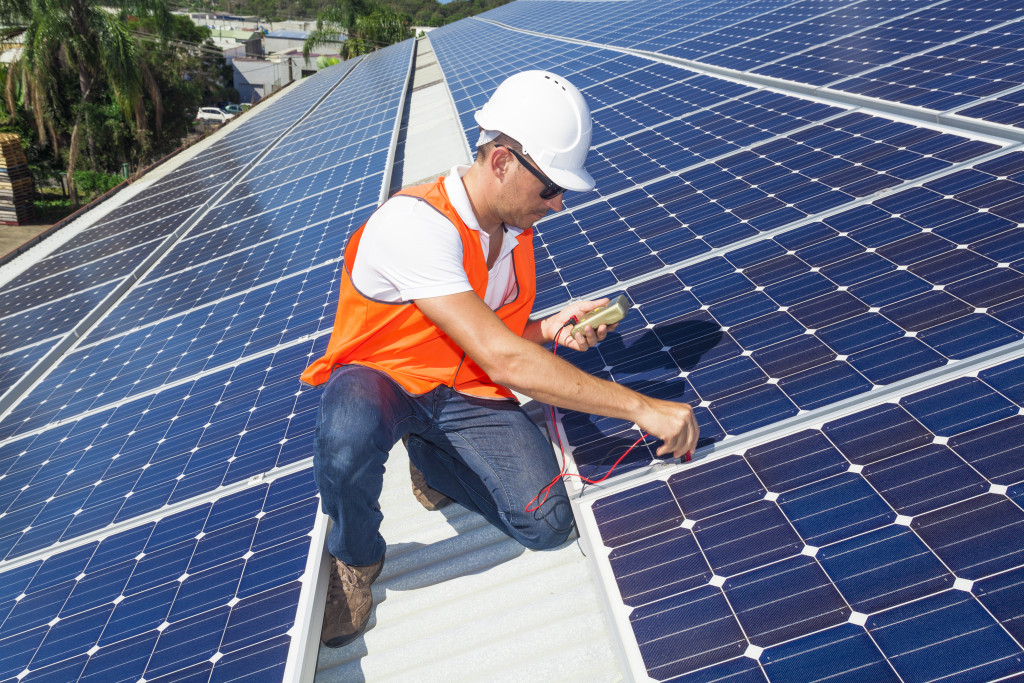Saving the Earth seems like a monumental task, and very few are motivated by it. However, almost everyone can get behind saving a bit — or a lot — of money. Do both simultaneously and feel good about yourself while having a few extra dollars to spend.
Cut Down on Toilet Paper
Every day, around 27,000 trees get flushed down the drain. The American uses 374 trees worth of trees as toilet paper within his lifetime. The average American household spends close to $400 on toilet paper a year. Cutting down on toilet paper use will be a big boon to the environment, but you can’t exactly sacrifice hygiene.
A bidet toilet seat solves the problem. Water replaces the first nasty swipes of toilet paper, allowing you to keep your butt clean with fewer wipes. A bidet toilet seat cuts toilet paper use by around 75 percent, potentially saving your household $300 a year. By reducing toilet paper use, your bathroom should have little to no clogging problems going forward.
Power Up with the Sun
Every home should have its own solar power system. Unless you live in a spooky village where the sky is overcast for half the year, there’s no reason not to go solar. The cost of solar power systems is dropping every year, but waiting a few years to buy one might not be a great idea since federal solar incentives expire in 2024. Federal incentives stand at 26 percent until the end of2022 and 22 percent until the end of 2023.
The purchase and installation cost for an 8-kW system will be around $16,000. An 8-kW system can meet the energy demands of a family living in a 4-bedroom house, saving $100-$150 a month. If you use a 10-year loan to finance your system, the monthly premiums should be more or less covered by the monthly savings on electricity bills. Once you’re done paying, you’ll still be saving $1,200-$1,800 a year on electricity.
Most solar power systems have guarantees at 90 percent performance for the first 10 years and 80 percent performance up to 25 years. Most systems last for over 40 years, so expect your solar panels to pay for themselves threefold or fourfold.

Get Better Cars
Carbon emissions and climate change go hand in hand. Vehicles account for close to 30 percent of carbon emissions in the US. The average car sends 4.6 metric tons of carbon dioxide into the atmosphere every year. Electric vehicles or EVs can limit the problem, but they are more expensive than the usual gas-guzzler — or are they? American drivers spend $2,000 on fuel each year on average. EVs cost $500 a year.
The extra cost of purchasing an EV is more than made up for by savings on fuel costs. Of course, if you’re charging your EV through the grid, you’re not making much of an impact environmentally. Fossil fuels account for 66 percent of US power production. Unless your house runs on solar power, you’ll still be charging your EV with fossil fuels. Electric cars are will also insulate you from carbon taxes that are sure to come as most states lean toward policies that penalize carbon emissions.
Grow Your Own Food
Vegetable farms reduce carbon by growing plants. However, fertilizers and transportation increase their carbon footprint. Sourcing locally reduces transport emissions, but you can go further by growing your own vegetables. Make use of your yard and grow lettuce, green beans, cucumber, or kale.
According to a study by the National Gardening Association, a household can grow $600 worth of vegetables each year. Once you’ve grown a few crops, you can extend your growing seasons with a greenhouse. Opt for a polycarbonate greenhouse to cut construction and material costs to less than $1,000.
Reuse Landry Water
An average family washes 8-10 loads a week or close to 40 loads a month. That’s around 1,500 gallons of water down the drain — water that you can use for other purposes. A greywater system for laundry costs around $700. Laundry water is perfectly fine for cleaning the car or parts of the house. If you use soaps free from sodium, boron, and bleach, you can even use laundry water for your vegetable garden. Greywater systems might save a paltry $15-$25 a month, but they still pay for themselves in 3-4 years.
Don’t just save the Earth. Save thousands of dollars a year by going green. Keep your conscience clean and your wallet full with green practices that save money.












